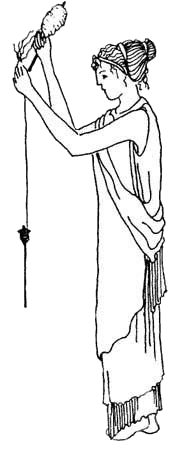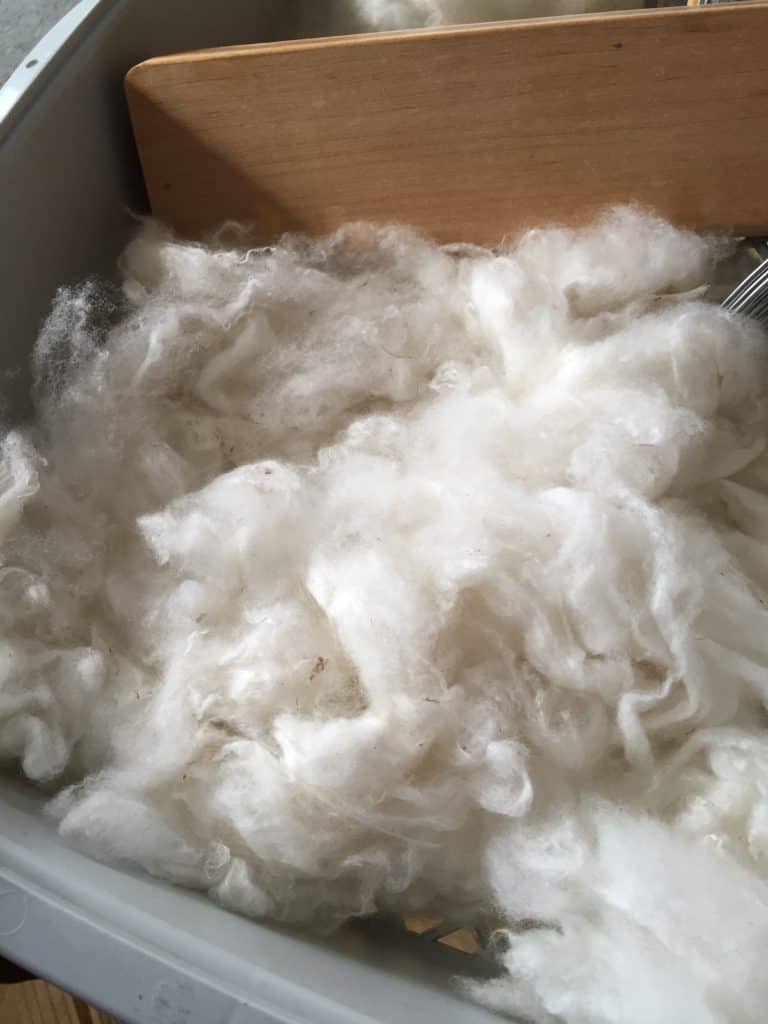Collection of Dye Recipes
When not specified, use equal amounts of plant parts (or more) and fiber.
Most recipes will give better results if fibers are pre-mordanted with potassium alum. (See NATURAL DYE PROCEDURE)
1. Simmer the fresh or dried flower heads for 1 hour or longer at 190 to 200 degrees.
2. Remove flowers and allow pot to cool.
3. Add well scoured wet wool and simmer for 30 minutes to 1 hour. Allow the fiber to cool in the liquid overnight for deeper shades.
1. Chop leaves and cover with boiling water.
2. Simmer leaves for one hour or longer. Allow cooked leaves to remain in the pot overnight.
3. Add wet fibers and simmer for 3 to 4 hours. Deeper colors are obtained if the leaves are left in the pot with the fibers.
1. Soak Walnut Hulls in water for 24 hours or longer.
2. Simmer the hulls for one hour to extract the dye color. Remove hulls and retain for additional processing. The can be kept dried or in water.
3. Add wet fibers and simmer for one hour. Leave fibers to soak in the dye liquid overnight.
4. Repeat this process for deeper color or add Iron Sulfate as a modifier to attain rich brown shades.
1. All parts of the plant (leaves, stems and flower heads) can be used for dyeing.
Flowers however give different colors.
2. Pour boiling water over the plant material and allow to steep overnight.
3. Simmer for 1 to 2 hours and allow to steep overnight again to achieve the deepest colors.
4. Remove plant material and add fibers and simmer 1 hour or more. Allow the fibers to cool in the pot overnight for deeper colors.
5. Iron or copper modifiers will deepen colors.
1. Alum mordanted fibers should be rinsed several times prior to dyeing.
2. Use 4 to 8 oz. ground madder root per pound of wool. Soak 12 to 24 hours before dyeing.
3. Pour madder root and soaking water into dye pot. Add 2 gallons water. Heat to 160 degrees for 1 hour. The pot can be allowed to cool and reheated to extract more color from the roots.
4. Add cold water to the pot before entering fibers.
5. Heat the pot slowly to 160 – 190 degrees. Do not allow temperature to exceed 190 degrees. Cook for 1 – 2 hours.(6) Brazilwood
1. Use 4 to 8 oz. wood chips per pound of wool, depending on color desired. Spread chips in a flat pan, wet chips and allow to dry a few days to bring out the color.
2. Boil wood chips for 1 hour, strain.
3. Enter alum mordanted fibers into dye pot. Simmer 30 minutes to 1 hour.
4. Rinse and dry.
This dye is fugitive – light sensitive. Historically it was combined with other dyes for more colorfastness.
(7) Goldenrod
1. Goldenrod can be used fresh or dried. Use ½ to 1 pound of goldenrod per pound of fiber.
2. Fill pot with plant tops and flowers. Cover with water.
3. Heat to 160 degrees and cook 1 hour. Strain.
4. Enter fibers and cook 1 hour.
Collect plant when heads are just fully open. Goldenrod is good to use when over dyeing in indigo for green, or in madder for orange.
(8) Indigo
(No pre-mordanting is necessary.)
Preparation of the indigo stock solution:
1. Fill a quart mason jar to the shoulders with hot tap water.
2. Add 1 ½ level teaspoons of lye, stir to dissolve
3. Add 2 teaspoons fine synthetic indigo powder or 2 – 4 teaspoons of indigo paste. Stir well for 2 minutes.
4. Add 1 teaspoon thiourea dioxide (spectralite). Stir 1 minute.
5. Place lid on jar and set in warm place or pail of hot tap water. Within 60 minutes the liquid should change from blue to muddy bluegreen to clear amber. It is now ready to use.
Preparation of the indigo vat:
1. Use a large pot, 5 gallon, for 1 pound of fibers.
2. Fill the pot with hot tap water – 110 to 140 degrees.
3. Add 1/8 teaspoon of lye to the water and stir until dissolved.
4. Add ½ teaspoon of detergent.
5. Add 1 teaspoon of thiourea dioxide (spectralite) and stir gently until dissolved.
6. Place lid on pot and allow to sit 15 minutes.
7. Carefully add the stock solution, stir gently, cover and wait until the vat is yellowish green in color.
Indigo dyeing procedure:
1. Introduce wet fibers gently without splashing.
2. Work the material gently into the pot. Leave wool materials 2 - 5 minutes in pot. For cotton or linen yarns leave up to 30 minutes.
3. With rubber gloves squeeze out the fibers underneath the surface and lift out over a basin to prevent dripping and agitating the pot.
4. Open up the material in the air and shake or hang to oxidize. Wait 10 minutes before redipping.
5. When dyeing is complete, wash fibers in Ivory liquid. Rinse thoroughly. Add a little white vinegar to the rinse water for wool fibers. Then soak in clear water for 1 hour or more, squeeze and dry.
Sources:
The Art and Craft of Natural Dyeing, Traditional Recipes for Modern Use, J.N. Liles, 1990,The University of Tennessee Press/Knoxville, ISBN 0-87049-670-0
Wild Color, The Complete Guide to Making and Using Natural Dyes, Jenny Dean, 1999, Watson-Guptill Publications/New York, ISBN 0-8230-5727-5


